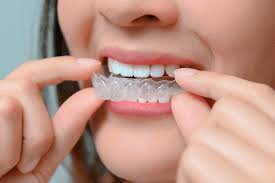A confident smile can open doors, boost self-esteem, and transform your overall appearance. But for many, achieving perfectly aligned teeth requires a little help—usually in the form of braces. The journey to straighter teeth isn’t just about aesthetics; it’s about oral health and function too. However, one of the most common questions parents and teens ask is: what is the best age for teeth braces? This article breaks down the ideal timing, treatment options, and what to expect before, during, and after braces.
Why Straight Teeth Matter
Before diving into the age factor, it’s important to understand why straight teeth matter. Misaligned teeth can cause:
-
Difficulty in chewing and speaking
-
Jaw pain or TMJ issues
-
Increased risk of cavities due to plaque buildup
-
Uneven wear of tooth enamel
Correcting alignment with braces can prevent these issues, improve oral hygiene, and enhance one’s smile and facial symmetry.
What Is the Best Age for Teeth Braces?
The ideal age for braces often falls between 9 and 14 years old. This is because the head and jaw are still growing, making it easier to shift teeth into the correct position. According to orthodontists, what is the best age for teeth braces depends on the individual’s dental development, not just their age.
Early Intervention: Ages 7-9
Children should see an orthodontist by age 7. At this stage, some baby teeth remain, but permanent teeth are beginning to emerge. Early evaluations can help:
-
Detect developmental issues
-
Guide jaw growth
-
Prevent severe misalignment later on
While not all children need braces at this age, interceptive treatment might be recommended to reduce the length and complexity of future treatments.
Pre-Teens and Early Teens: Ages 10-14
This is typically considered the best time to start orthodontic treatment. The jawbone is still flexible, and most permanent teeth have erupted. Starting treatment during this phase can:
-
Shorten the overall time in braces
-
Improve results
-
Align teeth more efficiently
Braces for Adults
Adults can absolutely get braces too, though the process may take longer due to fully developed bones. The benefits still outweigh the drawbacks, with modern options like clear aligners making adult orthodontics more discreet than ever.
Types of Braces to Consider
There are several types of braces available today, each with its own benefits. Choosing the right one depends on age, dental needs, and lifestyle.
1. Metal Braces
-
Most common and effective for complex cases
-
Affordable and reliable
-
Suitable for all ages
2. Ceramic Braces
-
Tooth-colored brackets make them less noticeable
-
Work similarly to metal braces
-
Slightly more fragile
3. Lingual Braces
-
Attached behind the teeth
-
Invisible from the front
-
May cause more initial discomfort
4. Clear Aligners (e.g., Invisalign)
-
Best for mild to moderate alignment
-
Removable for eating and cleaning
-
Popular among teens and adults
What to Expect During Braces Treatment
Understanding the process helps reduce anxiety and improves compliance, especially in younger patients.
Step 1: Initial Consultation
An orthodontist examines the teeth, jaw, and bite using X-rays and impressions. A personalized treatment plan is created.
Step 2: Application
Braces are attached to the teeth. For clear aligners, a set of custom trays is provided.
Step 3: Regular Adjustments
Monthly visits are necessary to tighten wires or switch aligners. These appointments are key to tracking progress.
Step 4: Retainers
Once braces come off, a retainer is essential to maintain results and prevent teeth from shifting back.
Benefits of Getting Braces at the Ideal Age
Still wondering what is the best age for teeth braces and why timing matters? Here are the key advantages of starting treatment at the right time:
-
Faster Results: Teeth move more easily in younger patients
-
Fewer Complications: Early treatment can prevent complex issues later
-
Improved Confidence: A straight smile during adolescence boosts self-esteem
-
Long-Term Oral Health: Proper alignment reduces the risk of decay and gum disease
Post-Braces Care Tips
Braces are just the beginning. Maintaining that beautiful new smile requires ongoing care:
1. Wear Your Retainer
Retainers must be worn as directed—often at night—to keep teeth in position.
2. Maintain Good Oral Hygiene
Brushing and flossing are more important than ever post-treatment. Schedule regular cleanings and check-ups.
3. Avoid Hard and Sticky Foods
These can damage retainers or shift teeth slightly over time.
Final Thoughts
If you’re considering braces for yourself or your child, the timing of treatment is crucial. While many factors influence the decision, experts agree that what is the best age for teeth braces usually falls between 10 and 14. Early consultation with an orthodontist can make all the difference in achieving a healthy, lasting smile.
Whether you choose traditional braces or modern clear aligners, remember: it’s never too late to invest in your smile—but starting at the right age can make the journey faster, easier, and more effective.



